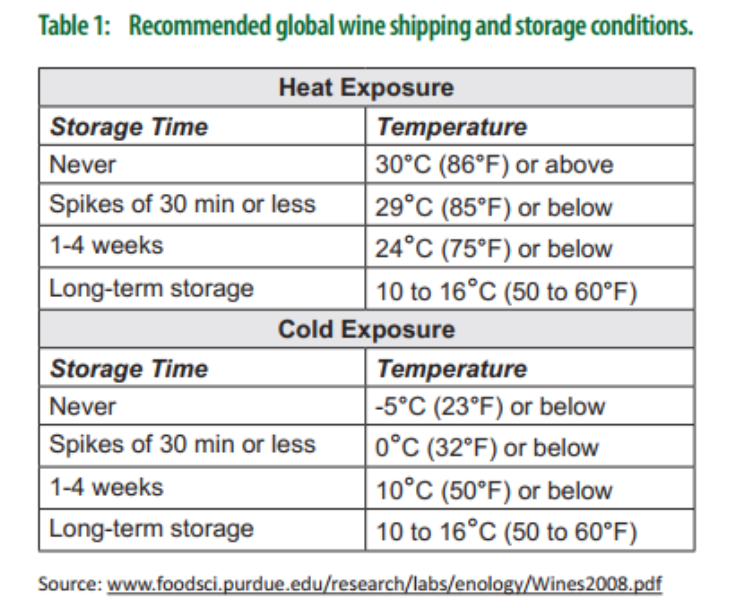Refining and redefining the wine shipping landscape
Wine — all the time. And why not? It’s a great question, and it’s one that Liviri Vino was designed to answer.
Currently, wine isn’t widely shipped in summer and winter, when hot and cold temperatures negatively affect its alchemy before it can be enjoyed by consumers. Liviri Vino, a high-performance line of insulated containers, offers safe, sustainable year-round solutions that allow wineries to move more bottles out the door, no matter the season. More than that, because wineries and consumers are concerned about sustainability, reusable Liviri Vino containers help eliminate single-use packaging waste that plagues the industry.
Here we sit down with Liviri’s Sr. Product Line Manager, Rachel Lee, to take a closer look at the Liviri Vino portfolio and the wine shipping landscape it’s built to traverse.
Why is temperature regulation an imperative for the Liviri Vino lineup?
Rachel Lee: Heat is enemy no. 1 for wine. Temperatures higher than 70 degrees F age wine faster than desirable. And if it gets much hotter than 86 degrees, wine starts to “cook,” resulting in off-flavors that taste raisin-y or stewed. The same way foods transform on the stove, wine changes as it experiences high temperatures. First, tannins become more noticeable and wine takes on a tangy, astringent character. Instead of a smooth and supple mouthfeel, wine feels rough and more one-note on the palate. Fruit flavors often become secondary to unpleasant acidity.
Wine’s ideal temperature range is between 45 and 65 degrees, though this isn’t an exact science. It’s not a big concern if your wine gets a little warmer than 70 degrees for a short period of time, but it’s critical that it stays below 86 degrees. Additionally, rapid oscillation of temperature between hot and cold — which often happens in transit — and light are also damaging to wine. The Food Science department at Purdue University published some great guidelines for storing and transporting wines.

Detail the current wine shipping landscape and explain how seasonal shipping constraints have thrown a kink in year-round business.
RL: Most wineries, especially ones that produce premium and luxury wines, do not ship if the temperature in the destination area is higher than 80 degrees or lower than 32 degrees. Determining this is an extremely manual process. Shipping operations at wineries are constantly monitoring temperatures at the locations where they ship. With the crazy weather in recent years, they can be managing hot and cold weather holds at the same time. It’s also risky business, because if the wine isn’t delivered on the first attempt, and the weather changes, it can be damaged.
Wineries, additionally, have a hard time right-sizing their storage space and staff to handle the peaks and valleys. They end up using more temporary employees than they’d like since it’s extremely hard to plan their workforce. They find themselves in the costly, inefficient predicament of having a 12-month business that only runs at capacity for 7 months.
Seasonal constraints make for operational challenges — busy seasons followed by not-so-busy times, particularly during the “J” months (June, July and January). The same issues impact consumers. In speaking with high-end wine buyers, the majority of those surveyed — 88% — said they’re concerned about extreme temperature damage. With that in mind, are they willing to buy more wine all year if it came in a temp-safe container and, if yes, why?
RL: Most luxury and premium wine is produced in small quantities and it’s highly allocated. Highly allocated means that the wine is almost 100% distributed to consumers on the mailing list. Consumers can wait years for the opportunity to join a mailing list. If a bottle of wine from one of these luxury wineries arrives damaged, there isn’t another from that vintage to replace it with, so heat and cold damage is a real concern. About 80% of the 10,000 wineries in the US produce less than 5,000 cases of wine. Most of this wine is only available via the tasting room or shipped direct-to-consumer. These wineries would benefit from the year-round cash flow of shipping in the summer and winter months, and consumers would be more willing to order if they could be ensured that their wine would arrive undamaged.
Let’s talk consumer experience. Liviri Vino eliminates wasteful, environmentally harmful materials such as styrofoam, it’s super easy to return and it allows for a beautiful presentation. Why are these elements important and how do they resonate with consumers?
RL: Wine packaging is complicated and controversial. It’s challenging for wineries to find suitable insulated packaging that’s strong enough to handle the necessary amount of coolant for safe transport. It’s reported that 2.5% to 3% of wine packages arrive damaged. Styrofoam is the most ubiquitous option for shipping with ice, however, current styrofoam shippers only hold enough ice to keep wine below 70 degrees for 1.5 days in summer temperatures, and wineries and consumers hate using it, due to its environmental impact and because it’s a hassle to dispose.
Wineries and consumers are hungry for a premium alternative that ensures their sometimes-irreplaceable wine investment arrives safe, in a beautiful reusable box. When they’re spending $100s or even $1,000s of dollars on wine, they expect that their packaging is commensurate with their wine expenditure.
How does box reusability make Liviri Vino a more sustainable solution than environmentally poor-scoring shipping options now in use?
RL: Liviri Vino’s reusability makes it environmentally favorable compared to single-use corrugate and styrofoam packaging. The VIP-insulated containers also enable ground shipping in non-refrigerated trucks. This has a significantly lower environmental impact than using refrigerated trucks and air shipping.
Studies show that virtual shoppers increasingly reward businesses that deliver sustainability — alongside great products. In fact, 90% of consumers we surveyed love the idea of a reusable shipping cooler, while 88% said they’d recommend a company that uses one. What does that mean for wineries that choose to partner with Liviri Vino?
RL: Environmental stewardship and sustainability are major focuses for wineries. Many actively pursue sustainability as a critical business strategy and hold themselves to exacting standards with commitments to renewable energy, onsite energy, greenhouse gas emission reductions, water conservation and waste management. They commit to land conservation projects, obtaining the majority of grower fruit from certified sustainable vineyards, reducing water intensity per gallon of wine, and more. Moving away from single-use packaging and styrofoam aligns with these greater objectives and takes a winery’s sustainability commitment directly to the consumer’s door.
Liviri Vino provides a very visible example of their overall sustainability commitment, which will have not only environmental benefits, but hard business benefits in terms of increasing both customer sales and business growth.
With Liviri Vino4 and Vino6 set to launch, these boxes have been running circuits with a major wine distributor in Napa. How does Liviri Vino sync with their business logistics needs?
RL: Liviri Vino is enabling them to ship wine throughout the summer and delight their customers with wine that arrives at their doorstep cold to the touch despite this summer’s crazy heat. They’re able to call their customers who have wine sitting in their warehouse on hold until October and give them the option of receiving their wine now. Many customers who were skeptical at first are proactively contacting them and letting them know how thrilled they are with the condition that their expensive wine arrived in, then they’re happily sending the box back so they can order more.
How does Liviri Vino help wineries differentiate themselves from other businesses in the wine shipping space?
RL: That’s easy. They’ll be the only option that’s currently offering truly safe summer wine shipping. Small parcel carriers offer traditional cold shipping programs, but there are many weak points in their cold chain as the wine only travels via refrigerated truck to a distribution center where it’s flown in non-air-conditioned planes and delivered in unrefrigerated trucks. With Liviri Vino the wine is in its own insulated cooler, so it always has a cool, constant temp, no matter how the outside environment fluctuates. Their high-end customers will appreciate this peace of mind.

